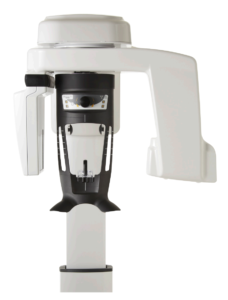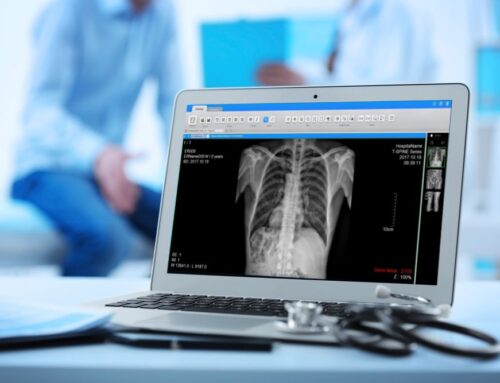EOS X-ray technology provides amazing possibilities for cases that presented orthopedic practices with serious challenges in the past. However, the fact is that most practices and hospitals will have no need for this technology — other more affordable pieces of equipment are often more appropriate.
EOS X-ray imaging, based on a Nobel prize-winning advancement in the field of particle detection, is a 3D radiology system that can simultaneously capture biplanar X-ray images of the body in an upright, standing or sitting, load-bearing position, using ultra-low radiation doses.
These images are most helpful to orthopedic practitioners, allowing them to view the interactions between the joints and the rest of the musculoskeletal systems, particularly related to the spine, hips, and legs.
EOS X-ray Systems Require the Lowest Radiation Dose

EOS delivers a radiation dose that is a half to a third less than the more common computed radiography (CR) X-ray, and around 1/20 of the dose of computed tomography (CT) scans — research on EOS micro-dose radiation can be read here.
The potential damage of X-ray radiation is cumulative, so the EOS technology’s reduced radiation dose is particularly beneficial for patients who need X-rays taken frequently, including those with scoliosis.
Children and teens who have been diagnosed with scoliosis are usually examined as often as every 3 to 6 months, exposing them to repeated radiation doses over the long term.
Patients with other progressive spinal, hip, or leg injuries/deformities also need to be frequently imaged to keep an eye on disease progression. Low-dose radiation is particularly beneficial to them, as well.
EOS X-ray Machines Increase Diagnostic Precision
3-D weight-bearing images of patients in an upright, standing position captured by EOS X-ray systems give physicians the most accurate view of the spine, hips, and legs, allowing orthopedists to better evaluate balance and posture, as well as to better analyze the alignment of bones, joints, and soft tissues from a variety of angles.
Often taken on a scale of 1:1, this type of imaging enables the diagnosing physician to view the patient’s entire body, with particular accuracy when observing, measuring, or calculating the following:
- Lengths and angles of extremities
- Size and volume of extremities
- Axial rotation and torsion of spinal vertebrae or lower limb components
- Physiological spinal curves such as kyphosis and lordosis scoliotic spine deformities
All of these important parameters used in diagnosis and measurement of disease progression can be automatically recorded with incredible accuracy since all images are captured within a single image, rather than piecing together multiple images.
In other words, EOS imaging technology provides medical professionals a highly accurate view of the musculoskeletal system that is critical to diagnosis and creation of treatment protocol…
But there’s a cost.
EOS Systems Can Be Cost-Prohibitive
EOS X-ray systems are highly specialized machines that are most effective when dealing with rare degenerative diseases, particularly in children, and aren’t usually a necessary service for most orthopedic radiology services.
That’s a good thing because these systems are often prohibitively expensive for all but the largest and most well-funded medical facilities.
That said, most in-house orthopedic needs can be met with a quality digital radiography (DR) system specifically designed with orthopedic needs in mind (including the high volume of X-rays needed in a specialty that deals with physical injury).
What is EOS X-ray?
The EOS x-ray is the first technology that creates full-body 3D images of patients in a natural, standing position. While it provides orthopedic imaging for patients with spine, hip, and leg disorders, the EOS scanner also produces much less radiation than traditional scanners do.
What is EOS imaging used for?
What is EOS? The EOS Imaging System is a low-dose, 3-D imaging system that scans your child standing up. An EOS scan shows us your child's natural, weight-bearing posture and allows us to see the interaction between the joints and the rest of the musculoskeletal system, particularly the spine, hips and legs.

